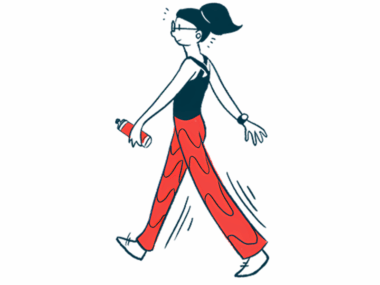Vibration Training Also Seen to Aid Cognition and Life Quality in Study
Written by |

A six-week program, called vibration training — in which people stand on a vibrating platform for short periods of time — eased disability and improved cognitive abilities and quality of life in people with multiple sclerosis (MS), a small randomized study found.
The program was also well accepted and tolerated, suggesting it may provide an inexpensive treatment option for those living with the disease.
“Having a proven program to help manage MS-related disability and cognitive impairment is essential to optimize health-related QOL [quality of life] for people with MS,” the researchers wrote.
The study, “Effects of vibration training on cognition and quality of life in people with multiple sclerosis,” was published in the International Journal of MS Care.
As a neurodegenerative disease that damages the protective coating around nerve cells, MS is characterized by symptoms such as numbness, fatigue, and impaired speech and muscular coordination. As it progresses, cognition can also be affected, and greater difficulties with movement can weigh on life quality.
Vibration training is increasingly of interest in preventing and treating movement disorders. During this training, patients stand or sit on a platform that vibrates at a certain frequencies and amplitudes. The vibration transmits energy throughout the body and forces muscles to contract and relax.
“The intense mechanical oscillation from the platform stimulates various sensorimotor units of the human body and leads to improvements in sensorimotor functions,” the researchers wrote. “Mounting evidence supports that a short-term (6- to 10-week) vibration training course improves physical functions (such as balance, mobility, strength, and power) in older adults.”
Such training has been shown to aid physical function in MS patients, but its effects on cognition and quality of life are not known.
Researchers led by a team at Georgia State University in Atlanta designed a study to evaluate a six-week vibration training program on these two MS aspects.
It enrolled 18 adults (17 with relapsing-remitting MS and one with secondary progressive MS) who were randomly assigned to receive vibration training over six weeks, or no training (control group).
The training group included eight women and one man, with a mean age of 53.9; training was given three times each week, for a total of 18 sessions. Nine women serving as controls (mean age of 49) were instructed to go on with their usual lifestyle.
Each session consisted of five short periods, or bouts, of low-frequency vibration at 20 Hz, followed by one minute of rest. A side-to-side alternating platform, on which patients stood upright and barefoot, holding onto supportive bars with knees slightly flexed, was used.
Over the study, researchers gradually increased each bouts’ peak-to-peak vibration amplitude and duration: 2 mm and one minute was set for the first two weeks, rising by 4 mm and one minute for the following two weeks, and by 4 mm and 1.5 minutes for the final two weeks.
Compared with the control group, those who went through six weeks of training showed greater reductions in disability, as assessed with the Multiple Sclerosis Functional Composite (MSFC), whose three parts evaluate lower and upper extremity strength and function, as well cognitive abilities.
Patients’ walking speeds — as measured in the Timed 25-foot Walking Test part of the MSFC — also increased after the training program relative to pre-training speeds, while no changes were observed among control group patients.
“The positive impact of vibration training on gait speed is practically important for people with MS because the preservation of mobility is critical for them to maintain independence, work, and social participation,” the researchers wrote.
Training group patients also showed better executive function than did controls, as measured with a scale that assesses behaviors involved in task initiation, working memory, planning, and organizing. A score that measures memory function on a verbal learning test also rose among the training group.
A scale relevant to quality of life, the physical domain score of the 36-item Short Form Health Survey (SF-36), also showed improvements in patients’ post-training scores relative to their pre-training scores, indicating daily life benefits of relevance to people with MS.
Itching after the first five vibration sessions was reported by one participant, but otherwise “no major discomfort or adverse reactions to vibration were reported during the study,” the researchers noted.
“These results suggest that vibration training could be an effective alternative training paradigm to enhance cognition and QOL in people with MS,” the scientists concluded, adding that its findings “provide an encouraging base to conduct a large-scale clinical trial.”
Future studies are needed into “the optimal vibration parameters that can maximize the training effect,” they added.
Limitations for this study include its small number of participants, and a lack of clinical information regarding patients’ symptoms and current treatments.






